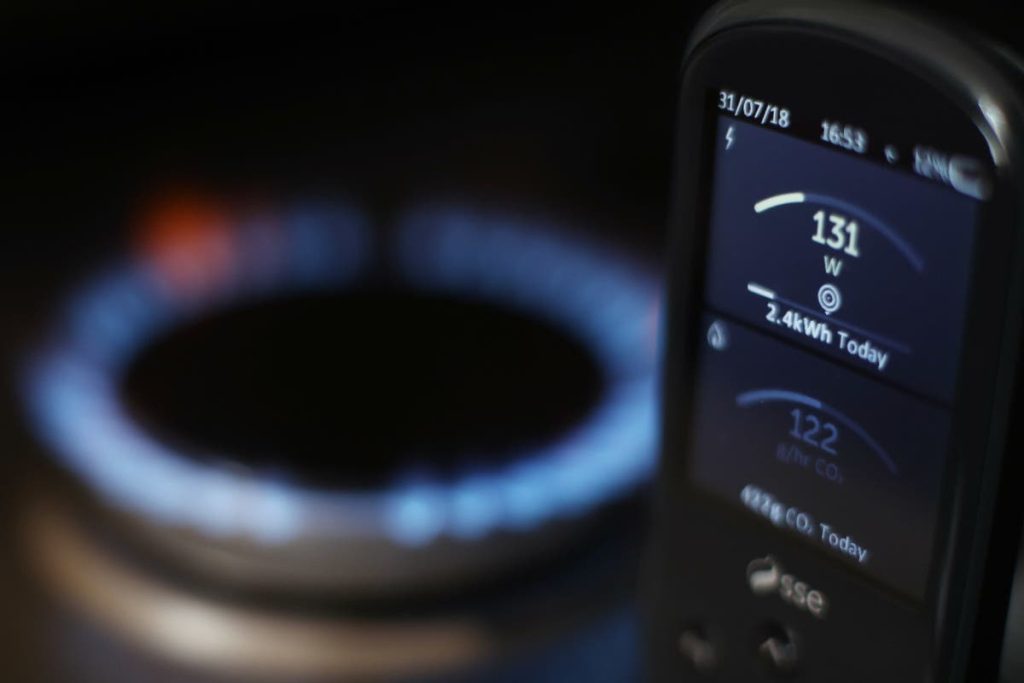On Friday (August 23), Ofgem is set to confirm that average household energy bills would increase by roughly nine per cent, with experts estimating the change to take effect in October.
Energy specialists Cornwall Insight predict that on October 1, the average household’s annual energy cost will increase to £1,714 from £1,568.
The amount that energy companies pay for gas and electricity before distributing it to homes is known as wholesale energy costs, and this is one of the criteria that the regulator uses to determine the maximum price. Once every three months, it gets updated.
This implies that households may have greater costs come wintertime than they did from April onwards, when the price cap was lifted.
Here’s everything you need to know about who sets the energy price cap and how it works.
Households are struggling to manage household bills
PA Archive
What is the energy price cap and what is Ofgem?
Ofgem, the Office of Gas and Electricity Markets, is the independent regulator of the British energy market and is intended to protect customers. A key part of its role is to set a limit – a price cap – on what energy firms charge customers on default or standard and variable tariffs.
Ofgem was launched in January 2019 by the regulator and, although it was originally a temporary measure, it has remained in place.
The cap is a regulatory measure designed to limit the amount energy suppliers can charge customers for their default or standard variable tariffs. It aims to protect consumers from excessive energy prices, especially those who do not switch suppliers regularly to find better deals.
The cap applies if you’re on a default energy tariff, whether you’re paying via direct debit, standard credit, or a prepayment meter — it doesn’t apply to a fixed-term tariff.
Previously, variable tariffs had been more expensive than fixed-rate deals. People are often on these tariffs because they fail to switch suppliers when a fixed term has ended or their supplier has been forced to close.
But, presently, fixed-term tariffs are more expensive than the cap, meaning most people are affected.
Ofgem said in August 2022: “The global rises we’re seeing in gas prices mean this is a very challenging time. Right now, this may mean you find few better-value tariffs than being on a supplier’s default rate covered by the Government’s energy price cap, if you are already on one.”
How is this different from the energy price guarantee?
After prices soared following Russia’s invasion of Ukraine in February 2022, the Government announced a lower energy price guarantee (EPG) would temporarily replace the cap. It had set a maximum price per unit for gas and electricity and paid any costs associated with a bill that is more than that amount. The EPG, which set the typical yearly energy bill at £2,500, ended on March 31, 2024, and prices are determined by the Ofgem price cap, which has been the case since July 1, 2023.
The cap limits the amount suppliers can charge per unit of energy (measured in pence per kilowatt-hour, or p/kWh) — and the maximum daily standing charge (the fixed cost of being connected to the energy network).
It is set at £1,568 a year for a typical home using gas and electricity and paying by direct debit between July 1, 2024, and September 30, 2024.
This is £122 less than the maximum amount of £1,690 that began on April 1, 2024, and ended on June 30, 2024. The next announcement is set to be made on Friday, August 23, and will cover from October.
How does the energy price cap work?
The energy price cap limits the maximum amount charged per unit of gas or electricity for customers on default tariffs. It is based on an estimate of typical usage for an average household. This means that the cap does not limit the total bill a household might receive — if you use more energy, your bill will be higher, and if you use less, you’ll pay less.
The cap also includes a maximum daily standing charge, the fixed cost of getting energy to your home. The cap is determined by the costs energy suppliers face, which include wholesale energy prices, network costs, operating expenses, policy costs, VAT, and a margin for earnings.
The specific cap amount varies depending on how you pay for your energy, whether through monthly or quarterly direct debit, on receipt of a bill, or if you prepay for it.
How is the energy price cap different from the energy price guarantee?
The energy price cap and the energy price guarantee (EPG) are related but distinct mechanisms. After energy prices soared following Russia’s invasion of Ukraine in February 2022, the UK Government introduced the EPG as a temporary measure to reduce the impact on households.
The EPG sets a maximum price per gas and electricity unit, with the Government covering any costs above this level. This effectively limited the typical annual energy bill to £2,500.
Unlike the price cap, which reflects wholesale energy costs, the EPG was a Government intervention with additional protection. The EPG ended on March 31, 2024, and from July 1, 2023, energy prices have been determined solely by the Ofgem price cap.

